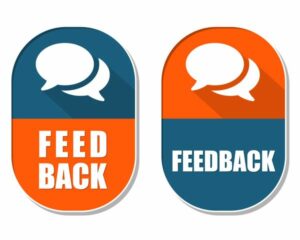Business Guidelines For Addressing Online Backlash
As businesses continue to navigate the ever-evolving digital landscape, online backlash has become inevitable. Having a solid plan in place to address negative feedback is crucial to maintaining your brand’s reputation and customer trust. In this discussion, we’ll provide valuable business guidelines for strategically and effectively handling online backlash, ensuring both quick resolution and long-term growth.
Business guidelines for addressing online backlash:
To address online backlash, businesses should understand the root cause, develop an appropriate response strategy, address the issue publicly, implement preventative measures, and continuously review performance. By following these steps, businesses can effectively manage negative online sentiment and prevent future issues.

Online backlash can be a challenging aspect of conducting business in the digital age. Dive into our comprehensive guide on handling negative comments and reviews, anticipating potential issues, and managing your brand’s reputation. Equip yourself with the tools to turn online setbacks into success stories. Keep reading!
Contents
- 1 Strategies for Managing Online Business Backlash
- 2 Navigating Online Criticism: Effective Handling Tips
- 3 Social Media Damage Control: Responding to Negative Comments
- 4 Tackling Negative Feedback on Social Media: A Guide
- 5 Mitigating Social Media Backlash: Prevention Techniques
- 5.1 • Understand Where the Backlash is Coming From
- 5.2 • Respond Quickly
- 5.3 • Maintain a Professional Tone
- 5.4 • Be Transparent
- 5.5 • Apologize When Necessary
- 5.6 • Address the Root Cause
- 5.7 • Limit Exposure to Further Backlash
- 5.8 • Monitor and Review Social Media Content
- 5.9 • Utilize Social Listening Tools
- 5.10 • Learn From the Experience
Strategies for Managing Online Business Backlash
In today’s digital era, businesses are increasingly reliant on online presence and reputation. While the opportunity for growth and visibility is immense, the risk of facing online backlash is also ever-present.
• Understand the Root Cause of the Backlash
Before addressing the backlash, it is critical for businesses to understand the underlying cause of online negativity.
This first step involves careful analysis of the comments, reviews, and feedback received from the audience or customers. Identifying the root cause allows businesses to tailor their response to the issue more effectively.
– Example: Poor Customer Service
Imagine a scenario where a business discovers a surge in negative online reviews associated with poor customer service. In this case, understanding the cause allows the business to focus its efforts on improving its service delivery rather than addressing individual complaints.
• Develop an Appropriate Response Strategy
Once the root cause of the backlash is identified, businesses can develop an appropriate response strategy. Depending on the severity of the issue, this may involve anything from minor adjustments to major operational changes. Be sure to have a well-thought-out plan in place before taking any action.
– Example: Handling Negative Product Reviews
If the backlash is primarily driven by negative product reviews, businesses can consider offering refunds or exchanges. Additionally, they may take steps to resolve any manufacturing or design flaws, which will demonstrate a commitment to addressing customer concerns.
• Address the Issue Publicly
Publicly addressing online backlash is a crucial aspect of resolving the matter. It helps businesses maintain their credibility and conveys their dedication to addressing concerns. To be effective, this response should be timely, relevant, and genuine.
– Example: DoorDash Tipping Incident
In July 2019, food delivery service DoorDash faced backlash for its tipping policy. The company was accused of keeping drivers’ tips to subsidize their pay. DoorDash CEO Tony Xu took to Twitter to address the issue and promised changes.
By responding publicly, Xu demonstrated the company’s commitment to addressing the problem and maintaining transparency.
• Develop and Implement Preventative Measures
To avoid future backlash, businesses must put preventative measures in place. These may include:
- Frequent quality checks: Regularly reviewing products and services to ensure high standards.
- Proactive policies: Developing policies that minimize the risk of backlash, such as addressing and preventing workplace harassment.
- Employee training: Ensuring that employees are well-trained in areas like social media management and crisis communication.
– Example: Starbucks
In 2018, Starbucks faced backlash after two black men were arrested at one of their locations. In response, the company not only apologized publicly but also implemented a mandatory anti-bias training day for all staff members. This proactive step hinted at the company’s dedication to ensuring such incidents would not happen again.
• Monitor and Review Performance
Finally, businesses should continuously monitor and review their performance to assess the effectiveness of their response and preventative measures. This should be an ongoing process, incorporating both quantitative and qualitative feedback.
– Example: Online Reputation Management
A suitable method for monitoring performance is online reputation management (ORM). Analytical tools can help businesses track the sentiment of their online audience and detect any potential backlash before it escalates.
In conclusion, businesses must be well-prepared to address any potential online backlash.
Understanding the root cause, developing an appropriate response strategy, addressing the issue publicly, implementing preventative measures, and continuously reviewing performance are key steps in managing and mitigating negative online sentiment effectively.
By adhering to these guidelines, businesses can not only swiftly address any existing backlash but also prevent future issues from arising.
Online backlash is an unavoidable aspect of the digital age, but it doesn’t have to be a negative experience. In fact, handling it appropriately can even benefit your online presence and reputation.
• Identify and Assess the Backlash
Before taking any action, you must understand the nature and severity of the backlash. Is it coming from an individual or a group? Are the criticisms valid or merely trolling? Are they attacking your content, your business, or you personally? These questions will help you determine the appropriate response.
- Identify the source: Begin by identifying who the backlash is coming from, whether it is a single person, a group, or an anonymous account. This will help you determine if the issue is widespread or isolated.
- Assess the validity: Consider whether the criticism is fair and justified. If so, an apology or explanation may be in order. But if the backlash is clearly trolling or attacking for the sake of it, do not engage. Instead, focus on managing its impact.
• Stay Calm and Composed
Reacting defensively or emotionally can further escalate the situation, so it is crucial to remain calm and collected when dealing with the online backlash.
- Take a step back: Give yourself time to process and assess the situation before you respond. Acting impulsively can lead to further problems.
- Stay civil and respectful: Even if the backlash is harsh or offensive, responding in kind can damage your reputation. Remain respectful and professional in all communications.
• Choose the Right Method of Response
The way you respond to online backlash can vary based on the situation and your goals. Here are some options to consider:
- Ignore the backlash: If the criticisms are coming from trolls or do not have any substance, you may choose to simply ignore them. Engaging with these users may only fuel the fire.
- Respond privately: In some cases, it makes sense to reach out privately to discuss the issue. This demonstrates a commitment to resolution but prevents the discussion from becoming public.
- Respond publicly: For situations where an explanation or apology is warranted, a public response can help mitigate the backlash and demonstrate your commitment to addressing the issue.
• Respond with Clarity and Brevity
When crafting a response to online backlash, it’s important to maintain a concise and clear message.
- Acknowledge valid concerns: If the backlash does contain valid criticisms, acknowledge and address them appropriately. This demonstrates that you are receptive to feedback and are actively working to improve.
- Offer further clarification: Sometimes, backlash stems from misunderstanding or misinformation. In these cases, provide clarity and facts to set the record straight.
- Keep it brief: Do not overcomplicate your response. Keep your message concise, and avoid engaging in lengthy debates.
• Learn and Grow from the Backlash
After addressing the backlash, take the opportunity to learn and grow from the experience.
- Analyze your actions: Reflect on the situation and consider what actions may have led to the backlash. Is there room for improvement in your behavior or content?
- Adjust your strategy: Being more mindful of potential triggers for backlash can help you avoid similar situations in the future. This can include revising your communication style or re-evaluating your content.
• Protect Your Mental Health
Online backlash can be emotionally draining, so it’s important to prioritize your mental health throughout the process.
- Limit exposure: Don’t immerse yourself in negative feedback. Set boundaries and manage your time spent engaging with backlash.
- Seek support: Reach out to friends, family, or even professional support to help process the situation and gain a different perspective.
- Practice self-care: Engage in activities that promote relaxation and well-being in order to mitigate stress related to online backlash.
In conclusion, dealing with online backlash effectively involves assessing the situation, staying composed, responding thoughtfully, and prioritizing personal well-being. By following the strategies and recommendations outlined in this guide, anyone can navigate the challenges of online backlash with confidence and grace.
Step | Description |
|---|---|
1 | Stay Calm |
2 | Assess the Situation |
3 | Take Responsibility |
4 | Respond Professionally |
5 | Know When to Disengage |
6 | Learn from the Experience |
7 | Monitor Your Online Presence |
Social Media Damage Control: Responding to Negative Comments
• The Importance of Addressing Negative Feedback
In the social media era, managing a company’s online reputation has become a top priority. Negative feedback, if left unaddressed, can potentially damage the brand image or drive away potential customers.
As a public relations expert with years of experience handling issues and crises, I can attest that responding promptly, professionally, and thoughtfully to negative comments on social media is crucial in maintaining a company’s reputation and building trust with customers.
• Preparation: Develop a Response Plan
Before diving into addressing individual negative comments, companies need to have a comprehensive response plan in place. This plan should include responding to comments, monitoring platforms, and knowing when and how to escalate issues, if necessary.
– Designate a Response Team
Having a dedicated response team will streamline the process and ensure that questions and concerns are addressed consistently and professionally. This team should be trained in social media etiquette, company policy, and crisis management.
– Create a Response Guide
Developing a guide for the response team to follow is essential to ensure consistency in approach and messaging. The guide should outline how to address various types of feedback, from general complaints to specific issues, and offer guidelines for escalating more severe cases.
– Monitor Social Media Channels
Monitoring platforms like Hootsuite, Sprout Social, or Brand24 can help track mentions and comments about your company on different social media channels. These tools allow you to respond and engage with customers on a timely and efficient basis.
• Crafting the Perfect Response
When responding to unhappy customers, the tone and approach should be professional, empathetic, and solution-focused.
– Acknowledge the Issue
Always begin by acknowledging the customer’s concerns and validating their feelings. This shows that you are genuinely listening and care about their opinions.
Example: “We understand how frustrating this experience must have been for you.”
– Apologize
Even if your company is not entirely at fault, it is essential to apologize. This conveys that you empathize with the customer and want to make things right.
Example: “We apologize for the inconvenience this situation has caused you.”
– Offer a Solution
Provide the customer with a specific solution or steps your company will take to resolve the issue. This demonstrates a commitment to customer satisfaction and can help rebuild trust.
Example: “Our team is looking into this matter and will reach out to you within 24 hours with a resolution.”
– Go Above-and-Beyond
If possible, going beyond the expected resolution can delight customers and turn a negative experience into a positive one. This could be a discount, a free service, or an upgraded product.
Example: “As a gesture of goodwill, we would like to offer you a complimentary upgrade for your next purchase.”
• Taking the Conversation Offline
In some instances, it is necessary to take the conversation offline for privacy or security reasons. This can also help prevent further public escalation of the issue.
Example: “In order to better assist you, please contact our Customer Support Team directly at [phone number] or [email address].”
• Learning from Negative Feedback
Companies should not shy away from negative feedback but embrace it as a learning opportunity. Analyzing feedback can help identify patterns in customer complaints, leading to improvements in policies, products, and services.
• Handling Social Media Trolls
While it’s crucial to address legitimate concerns, some comments may come from trolls or individuals with malicious intent. In these cases, it may be wise to limit engagement, block/report the individual when necessary, and establish clear guidelines for acceptable online behavior.
• In Summary
Effectively managing negative feedback on social media is essential for protecting and enhancing a company’s reputation.
By implementing a proactive response plan, handling comments professionally, and learning from criticism, brands can demonstrate their commitment to customer satisfaction and maintain trust among both current and potential customers.
For further reading and insights on managing reputations online, visit the Nielsen Norman Group website for in-depth research and advice.
Tackling Negative Feedback on Social Media: A Guide
In the world of social media, negative feedback is unavoidable. No matter how carefully curated your online presence is, you will eventually encounter disgruntled customers or users who are eager to share their dissatisfaction.
In fact, according to a study by the Pew Research Center, the public’s trust in technology companies has been on the decline in recent years. In this guide, we will discuss how to effectively address negative feedback on social media and provide expert tips and recommendations to mitigate the damage.
• Analyzing and Assessing the Situation
Before responding to negative feedback on social media, it’s essential to analyze and assess the situation thoroughly. This step helps you to:
- Determine the severity of the issue
- Identify potential solutions or resolutions
- Understand the user’s perspective
Tip: Avoid overreaction or responding in haste. Always consider the context, the user’s profile, and the overall impact of the comment before crafting a response.
• Responding Professionally and Promptly
The key to addressing negative feedback is to respond professionally and promptly. A timely response demonstrates your commitment to customer satisfaction and helps prevent the issue from escalating.
- Acknowledge the issue and show empathy
- Offer a solution or potential resolution
- Maintain a positive and helpful tone
- Continue the conversation in private, if necessary
Recommendation: Use well-crafted and empathetic message templates for common issues to ensure consistency and professionalism in your responses.
• Learning From and Incorporating Feedback
Regularly reviewing and incorporating negative feedback is crucial for continuous improvement. Use this feedback to identify shortcomings in your products, services, or communication, and take appropriate action to rectify these issues.
- Update internal processes or policies
- Train employees and improve their social media interactions
- Modify your product or service offerings as needed
Tip: Treat negative feedback as an opportunity to learn, grow, and maintain a customer-centric approach to your business operations.
• Monitoring and Managing Your Online Reputation
An essential aspect of addressing negative feedback on social media is monitoring and managing your online reputation. Regular monitoring and proactive management of your social media presence will help you:
- Identify and address issues early
- Track trends or recurring issues
- Maintain a positive public perception
Recommendation: Use social media monitoring tools or services to keep track of your online presence, including brand mentions, customer sentiment, and emerging trends.
• Encouraging Positive Feedback and Testimonials
To counterbalance negative feedback, it is also essential to encourage and showcase positive testimonials from satisfied customers. Successful strategies include:
- Requesting customer reviews on review platforms or directly on your social media channels
- Sharing positive stories or testimonials from satisfied customers
- Offering incentives for users sharing their positive experiences
Tip: Consistently receiving positive feedback will not only improve your online reputation but also increase customer trust and brand loyalty.
• Handling Trolls and Malicious Feedback
While it’s essential to address genuine negative feedback, not all criticisms on social media are valid or genuine. It’s crucial to differentiate between legitimate feedback and malicious trolling.
- Don’t engage with malicious comments or trolls
- Report abusive or harmful content to the platform
- Maintain a professional and composed demeanor
Recommendation: Develop an internal guideline for identifying and handling trolls or malicious feedback to ensure a consistent and professional approach.
In conclusion, effectively addressing negative feedback on social media is crucial for maintaining an excellent online reputation and ensuring customer satisfaction.
By analyzing the situation, responding professionally, learning from feedback, and promoting positive testimonials, businesses can transform negative feedback into a valuable opportunity for growth and improvement.
Steps | Description |
|---|---|
1. Monitor social media | Regularly check your social media platforms to keep track of any negative feedback. |
2. Evaluate the feedback | Determine if the feedback is genuine and requires addressing or if it’s just a spam or troll comment. |
3. Respond promptly | Quickly acknowledging and addressing negative feedback can prevent the issue from escalating. |
4. Apologize if necessary | If the feedback is valid, a sincere apology can go a long way in resolving the issue and maintaining your online reputation. |
5. Offer a solution | Propose a way to address the issue and make things right for the dissatisfied customer. |
6. Take the conversation offline | Request the individual to contact you directly via email or private message to further discuss their concerns and resolution. |
7. Learn from the feedback | Use negative feedback to identify areas for improvement and implement changes when necessary. |
Mitigating Social Media Backlash: Prevention Techniques
• Understand Where the Backlash is Coming From
The first step to stopping social media backlash is understanding where it’s coming from. Look at the comments and conversations surrounding your brand or content.
Are people upset about a specific announcement, the quality of a product or service, a controversial statement, or something else?
Identifying the root of the issue is essential for successfully addressing it. Research and analysis using Pew Research Centers useful studies on social media to gain perspective on the broader trends and contextualize the feedback.
• Respond Quickly
It’s important to respond quickly to any negative comments or backlash on social media. Leaving negative comments unaddressed for too long can make the situation worse, as people may think your brand doesn’t care about their concerns or issues. Timely responses can help mitigate the backlash and show that you are listening.
• Maintain a Professional Tone
When addressing social media backlash, it’s important to maintain a professional tone. Respond calmly and without aggressive language, as this could exacerbate the situation.
Focus on providing a clear and concise explanation or apology, depending on the circumstances, and avoid engaging in arguments or debates with users.
• Be Transparent
Transparency is key when addressing backlash. It’s important to be upfront about any issues or mistakes that have led to the backlash and explain what steps are being taken to address them. This will show that you are taking the concerns seriously and are committed to making things right.
• Apologize When Necessary
If your company has made a genuine mistake or error, it’s important to apologize sincerely. A genuine apology can help defuse a tense situation and begin restoring trust in your brand. Keep the apology specific and focused on the issue at hand, and avoid making excuses or placing blame on others.
• Address the Root Cause
Work to address the root cause of the backlash. Implement changes, resolve issues, or make necessary improvements to prevent similar backlash in the future, and communicate these efforts to your audience.
Showcasing how you are actively working to resolve the issue can help rebuild trust with your audience and show your commitment to their needs and concerns.
• Limit Exposure to Further Backlash
While it is essential to address negative feedback directly, ensure your social media accounts don’t amplify the backlash further.
For instance, do not retweet negative comments or share response posts on your account. This can prevent drawing more attention to the issue and help focus on more positive content to counterbalance the backlash.
• Monitor and Review Social Media Content
Regularly review and monitor your social media content to identify any potentially controversial content or sensitive topics that might cause a backlash. By proactively avoiding or addressing such issues, you’ll minimize the risk of future backlash.
• Utilize Social Listening Tools
Utilizing social listening tools, such as Hootsuite or Sprout Social, can help you better understand your audience’s sentiments, monitor relevant conversations, and identify potential backlash. These tools can also assist in responding quickly when backlash arises.
• Learn From the Experience
Lastly, it’s crucial to learn from each experience of social media backlash. Analyze what went wrong, why there was a backlash, and how your response either helped or hindered the situation.
Each experience can serve as a valuable lesson to inform your brand’s social media strategy moving forward and help prevent future backlash.
By following these recommendations and implementing effective strategies to address social media backlash, you’ll demonstrate your brand’s commitment to addressing issues directly, rebuilding trust, and maintaining accountability in the eyes of your audience.
Step | Description |
|---|---|
1 | Acknowledge the issue and respond promptly |
2 | Apologize if necessary and show empathy |
3 | Address the issue publicly and clarify misunderstandings |
4 | Take responsibility and offer solutions/actions |
5 | Engage with users and address their concerns directly |
6 | Leverage supporters to help mitigate backlash |
7 | Monitor social media platforms consistently and address new backlash as needed |
8 | Learn from the experience and take steps to prevent future backlashes |







